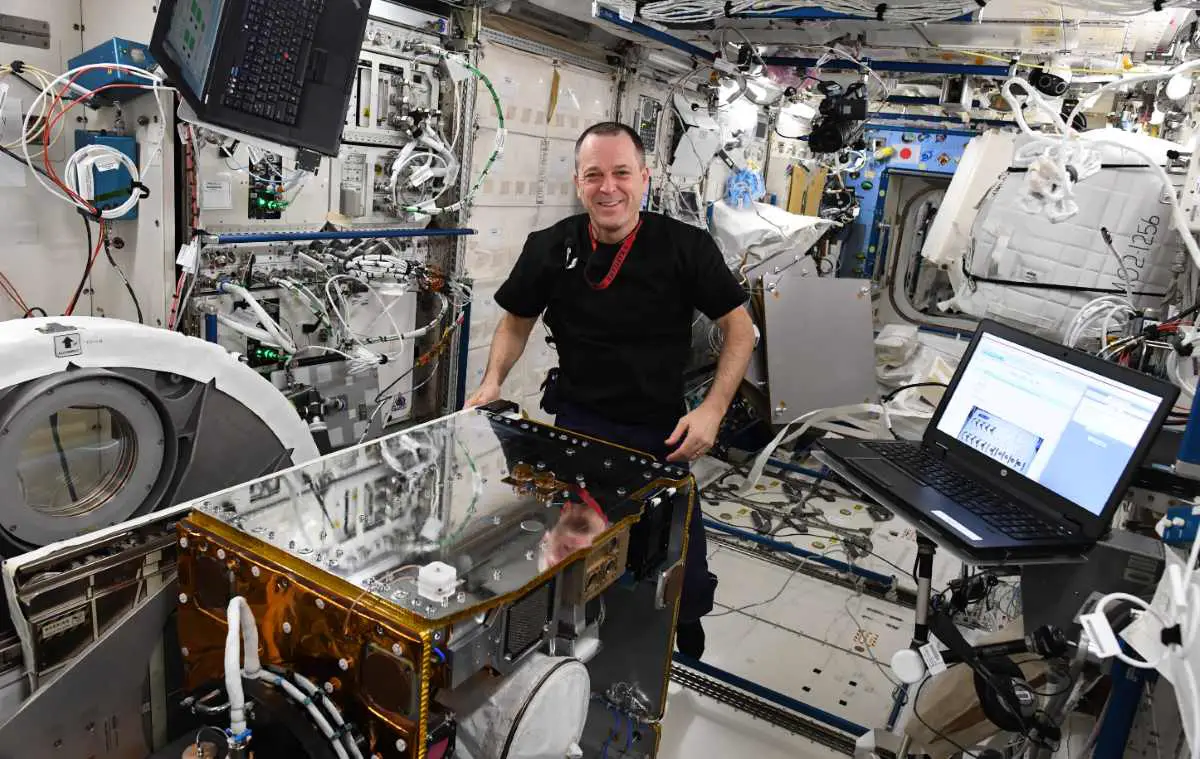This short video titled “how orbits work” beautifully explains what is an orbit and what you should do to enter into a stable one around Earth, or any other celestial body.
Supercluster Explains is a video series that illuminates basic space science concepts using short, easy-to-understand animations. This episode explains a fundamental part of flying in outer space: Orbit.
What is an orbit and how does it work
In a nutshell: imagine you could jump so high that your jump-arc is bigger than Earth itself. Well, you would never land back on Earth. The planet curves down in front of you so fast you never touch it. You fall forever.
That’s why astronauts aboard the International Space Station (ISS) float – they are actually free-falling towards the Earth.

Related: Why astronauts float in space
“Free fall” is any motion of a body where gravity is the only force acting upon it. An object moving upwards would not normally be considered to be falling, but if it is subject to the force of gravity only, it is said to be in free fall. The International Space Station is thus in free fall. Our Moon is free-falling towards the Earth, too. Earth is free-falling towards the Sun, etc…
In physics, an orbit is the gravitationally curved trajectory of an object, such as the trajectory of a planet around a star (i.e. Earth’s trajectory around the Sun) or a natural satellite around a planet (i.e. Moon’s trajectory around Earth).
Even if an object, for example, a spacecraft does not have enough speed to orbit insertion, sometimes it still can reach space. This is called sub-orbital spaceflight – a spaceflight in which the spacecraft reaches outer space, but its trajectory intersects the atmosphere or surface of the gravitating body from which it was launched (i.e. Earth) so that it will not complete one orbital revolution.
So, to insert an object into an orbit around Earth – or any other celestial body, you need to speed it up. The stronger the gravity of the body, the faster you should go. That’s why we use rockets to launch something into space.
A low Earth orbit (LEO) is an Earth-centered orbit with an altitude of 2,000 km (1,200 mi) or less (approximately one-third of the radius of Earth). For example, the mean orbital velocity needed to maintain a stable Low Earth Orbit (LEO) is about 7.8 km/s (28,000 km/h; 17,000 mph). LEO is where International Space Station orbits Earth.
It is really hard to put an object in a trajectory around Earth – but it’s not because space is high up. It’s hard because you have to go so fast. Getting to space is relatively easy. The problem is staying there.

Click on the image to see it in full size.
Orbital flight – “deliberately” missing the ground
If you read Douglas Adams’ “The Hitchhiker’s Guide to the Galaxy”, you can notice how an orbit is similar to the “definition” of flying in the book.
The Hitchhiker’s Guide to the Galaxy has a large section on the subject of flying, which details exactly how to master the art of flying.
According to the Guide, the main thing that flying requires is the ability to throw yourself at the ground and miss. It says to throw yourself forward with all your weight and “the willingness not to mind that it’s going to hurt”, however it will surely hurt if you fail to miss the ground. The difficulty is in missing the ground, and doing so accidentally, as “deliberately intending to miss the ground” does not work.
“There is an art to flying, or rather a knack. The knack lies in learning how to throw yourself at the ground and miss. … Clearly, it is this second part, the missing, that presents the difficulties.”
Life, the Universe and Everything – The Hitchhiker’s Guide to the Galaxy by Douglas Adams

Sources
- Orbit on Wikipedia
- Orbit insertion on Wikipedia
- “Flying” on the Hitchhikers’ fandom website
- Moon Landings: All-Time List [1966-2025] - February 2, 2025
- What Is Max-Q and Why Is It Important During Rocket Launches? - January 16, 2025
- Top 10 Tallest Rockets Ever Launched [2025 Update] - January 16, 2025

